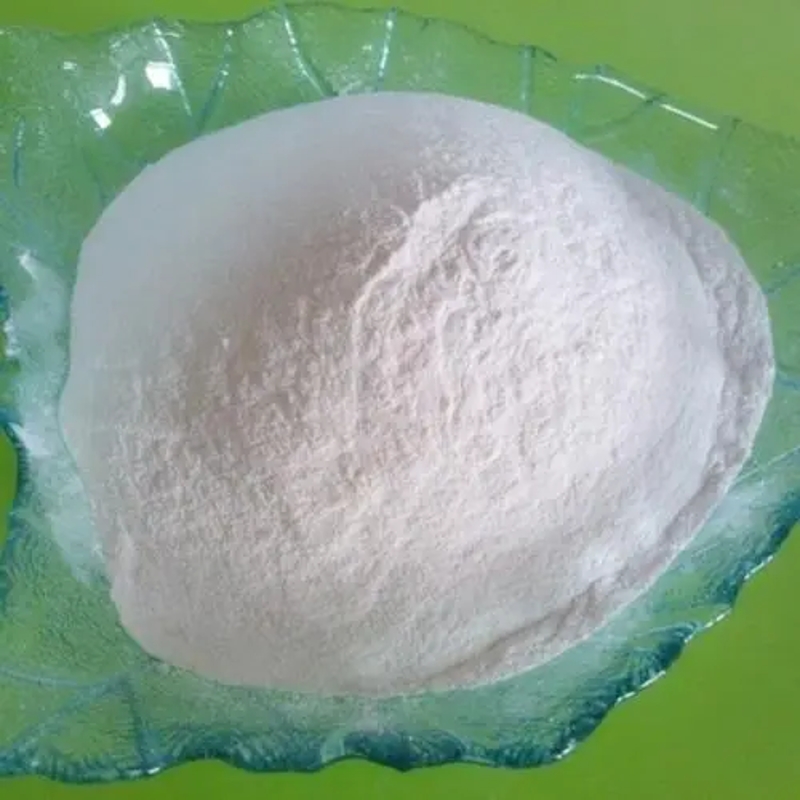-
Categories
-
Pharmaceutical Intermediates
-
Active Pharmaceutical Ingredients
-
Food Additives
- Industrial Coatings
- Agrochemicals
- Dyes and Pigments
- Surfactant
- Flavors and Fragrances
- Chemical Reagents
- Catalyst and Auxiliary
- Natural Products
- Inorganic Chemistry
-
Organic Chemistry
-
Biochemical Engineering
- Analytical Chemistry
- Cosmetic Ingredient
-
Pharmaceutical Intermediates
Promotion
ECHEMI Mall
Wholesale
Weekly Price
Exhibition
News
-
Trade Service
preface
Mucormycosis is an aggressive mycosis, formerly known as zygomycosis, which is a more harmful infectious disease
A common route of invasion of mucormyco infection is the inhalation of fungal spores through the sinuses or airways, so the sinuses and lungs are the gateway to mucormyces invasion and the organs most commonly affected2
Case passed
Patient, male, 70 years old, intermittent cough after a cold 1 week before admission (April 7), sputum production, no chest pain, no hemoptysis, no fever, no obvious shortness of breath, a lung CT examination on April 8 in the outer hospital showed "complex density shadow of the upper lobe of the left lung" (Figure 1), and after giving "cefoperazone" and "levofloxacin" static points for 3 days, he was discharged from the hospital for continued treatment of "nephrotic syndrome" and went to the nephrology department of
Figure 1 Lung CT on April 4
On April 19, he was transferred to respiratory therapy, considering the reverse synadia sign of lung CT, the air semi-monthly sign, a wide range of lung lesions (see Figure 2), sputum acid staining, negative DNA test of Mycobacterium tuberculosis, WBC7.
Fig.
On April 24, 2 fungal cultures and one bacterial culture were cultured with rhizobia (see Figure 3), MALDI-TOF identification results: microspores (see Figure 4), GM experimental results negative, combined with lung CT findings, the diagnosis of pulmonary mucormycosis is established, sputum smear can see a large number of neutrophils, no fungal filaments, due to the combination of mycelium wide wall, direct smear is easy to break, gram staining is easy to miss the test, communicate with the respiratory department, according to the "2019 European Mucormycosis Diagnosis and Treatment Guidelines", It is recommended to give amphotericin B liposome or posaconazole therapy, patients refuse to use due to economic problems, due to membranous nephropathy, amphotericin application is limited, self-consultation with Peking Union Medical College Hospital, it is recommended to use voriconazole therapy
Fig.
Fig.
Figure 4 Mass spectrometry identification results
On May 12, the Department of Respiratory Medicine invited CT room, thoracic surgery, laboratory department, nephrology to conduct multidisciplinary consultation, microbiology professional participation in the consultation, according to the patient's course and progress, it is recommended to apply amphotericin B or posaconazole treatment, due to the large lesion, the patient's advanced age, thoracic surgery recommends that the lesion be considered when the lesion
On June 12, the follow-up of lung CT was reduced, the lesion was not expanded, the cavity was confluent, the air signs were increased, WBC13.
Figure 5-1 Lung CT on April 17
Fig.
Fig.
Fig.
Case studies
Clinical case studies
Pulmonary mycosis is the most common deep mycosis, in recent years, due to the long-term application of antitumor drugs, immunosuppressants, cytotoxic drugs, glucocorticoids, in vivo interventional therapy, organ and hematopoietic stem cell transplantation, etc.
The patient has long-term use of glucocorticoids and immunosuppressants due to kidney disease, a history of hypertension, new diabetes, the patient lives on the first floor, the heating is stopped in the north in April, and the living environment is cold and wet, all of which are risk factors
Inspection case studies
Patients with early G test positive, may be caused by a variety of reasons, such as the use of antibiotics, blood transfusions to correct anemia, the application of immunosuppressants, etc.
Microsporemyces infection is relatively rare in the north, and the patient has his own underlying disease, is a susceptible population of pulmonary fungal disease infection, and there are risk factors
.
Clinical microbial work, filamentous fungi results return is usually more cautious, first of all, will consider whether the specimen is qualified, whether the test is timely, the case before the examination of fungal culture, the doctor has communicated with the microbial personnel, because the G experiment is positive, so consider not excluding cryptococcal infection, communication after sending phlegm fungus culture, after cultivating the microsporum fungus, find out the original specimen for smear, sputum direct smear did not see the wide hyphae, because the filamentous fungus needs to exclude pollution factors, After communication, the fungal culture and bacterial culture were sent for examination again, and 2 samples of the bacteria were cultured, so the pathogen was determined
.
Amphotericin B or posaconazole is preferred for the treatment of mucormycosis, patients refuse to use it, and after switching to voriconazole, there is improvement, possibly mixed infection, and the production of a large number of aerophytic hyphae by Microsporemyces will affect the detection
of other pathogenic bacteria.
Case summary
This case is an elderly male patient with underlying diseases such as nephrotic syndrome and diabetes, and long-term use of immunosuppressants, which is a susceptible population
to pulmonary mycosis.
Based on bacterial culture results and CT imaging results, the diagnosis of pulmonary defects is clear, surgical excision of the lesion is preferred, and amphotericin B liposomes are preferred for antifungal therapy, or posaconazole or esaconazole
.
At present, the identification of rare fungi is difficult, this case is identified as a microspore root mold by Bruker MALDI-TOF mass spectrometer by the application of formic acid extraction method, the fungus is identified to the level of the species, and the result of clinically clear pathogen is returned
.
In this case, effective clinical communication played a great role, in the early stage of the test, timely communication, lock the target for fungal infection, microbiology room personnel to give enough attention, timely analysis of the culture results, 3 times positive culture, determine the pathogenic bacteria
.
Knowledge development
Microsporum belongs to the genus Rhizobium of the order Mucormyceae, the colony is light brownish gray, produces high aerophytic hyphae, distinguishes from the hypophytic hyphae of the root mucormyce, the spore stem is mostly not branched, as opposed to the false root, Microspore root mold is the second most common pathogen in mucormycosis, which can be isolated
from soil or wood products 。 Most of the antimicrobial susceptibility of Mucormycete is the same, in vitro experiments and animal models of infection show that amphotericin B is most effective for most mucormycin strains, is listed as a first-line treatment drug1, but the toxicity is obvious, and there is a dose accumulation effect, so it can only be used when there is no optional drug, the effect of exaconazole is comparable to the therapeutic effect of amphotericin B preparations
, and the low activity of voriconazole in the new azole drugs is relatively low in Possaconazole.
The application of diabetes and glucocorticoids is a typical risk factor for mucormycosis4, the 2021 outbreak of mucormycosis in India suggests that COVID-19 is also mucormycosis infection is a risk factor, the main type is nasal-orbital-brain mucormycosis in patients with uncontrolled diabetes mellitus5, there are also reports of infection with mucormycosis in immunocompetent patients, and the imaging phenotype of pulmonary mucormycosis can be solid changes in the lobes or lung segments, and can also appear as symptoms of halo, reverse fainting, and pleural effusion
.
Invasion can cause lung consolidation or atelectasis, and invasion of blood vessel walls can easily lead to the formation of thrombosis and infarction foci, and a few will form aneurysms or pseudoaneurysms6
.
Expert reviews
Wang Chengying, Chief Technician, Deputy Director of the Department of Clinical Laboratory, Daqing Oilfield General Hospital
The patient due to fever to the doctor, has been anti-gram-negative bacteria and anti-gram-positive bacteria treatment, the effect is not good, due to the basic kidney disease, long-term application of immunosuppressants, in the early stage of our hospital, lung imaging results show interstitial changes, there is a cavity formation, about two weeks after the rapid progression of lesions, 3 weeks after admission of sputum bacteria culture out of the root mold genus, the use of formic acid extraction method, identified by MALDI-TOF as microspore root mold, and 3 sputum culture results are consistent, the pathogen bacteria are clear, G experiment GM experiments are negative, Combined with pulmonary imaging manifestations, the diagnosis is clear, multidisciplinary MDT discussion, the patient's treatment opinion is posaconazole treatment, the patient does not agree, the patient himself consulted the Union Hospital, insisted on using voriconazole treatment, the symptoms improved, but voriconazole is ineffective for mucormyces 1, consider mixed infection, post-discharge review, the total number of leukocytes increased compared with before discharge, and no fungal culture
continued.
Filamentous fungi grow rapidly, rhizobia morphology needs to be distinguished from Mucormyces and Mucormyces rhizoli, lactate melantronic staining can be identified to the genus, MALDI-TOF mass spectrometry technology can be identified to the species level, traditional culture technology and microscope morphology technology is the basic knowledge that microbial professionals should master, the new mass spectrometry technology from the protein level for rapid diagnosis of bacteria and fungi, need to be combined with traditional inspection techniques to further improve the identification
of filamentous fungi.
【References】
[1] Liang Guanzhao, Liu Weida.
Interpretation of 2019 European Guidelines for the Diagnosis and Treatment of Mucormycosis,[J]Chinese Journal of Mycology.
2021.
4vol16(2)
[2] Zhang Wenna et al.
Clinical decision-making for comprehensive treatment of mucormycosis,[J]Chinese Medical Journal,2018,98(10)
[3] 12th edition of American Clinical Microbiology
[4]A.
S.
Ibrahim, B.
Spellberg, T.
J.
Walsh, D.
P.
Kontoyiannis, Pathogenesis of mucormycosis, Clin.
Infect.
Dis.
54 (2012)S16-S22
[5] Fernández-GarcíaO, Guerrero-Torres L, Roman-Montes CM, et al.
Isolationof Rhizopusmicrosporus and Lichtheimia corymbiferafrom tracheal aspirates of two immunocompetent critically illpatients with COVID-19.
Med Mycol Case Rep.
2021 Sep; 33:32-37.
[6] Shi Yubo, Wu Xiaokang, et al.
, 1 case of
pulmonary mucormycosis with aneurysm formation.
[J]Chinese Journal of Infection and Chemotherapy, 2021.
1vol22(1)98-101.







